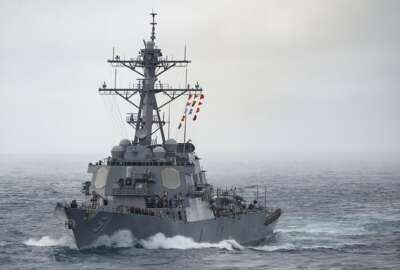

NGEN program officials are meeting with Defense acquisition bosses this week, anticipating approvals for a final solicitation on July 31.

Navy officials are moving into the final stretch of preparations to release a pair of contracts that will divide and replace its $3.5 billion Next Generation Enterprise Services (NGEN) contract later this year.
Beginning Tuesday, NGEN program managers are set to meet with acquisition officials in the Office of the Secretary of Defense for a final peer review on the acquisition strategy, Navy officials told vendors on a conference call.
Then on July 31, they plan to present the final request for proposals to James Guerts, the assistant secretary of the Navy for research, development and acquisition. Assuming Guerts signs off, the Navy plans to release the final requests for proposals on the same day.
The program — formally called “NGEN-R” or “NGEN-Recompete” — will break the current contract the Navy uses to handle its government-owned, contractor-operated Navy Marine Corps Intranet (NMCI) into two separate awards.
One of the new contracts will task vendors with supplying IT hardware for NMCI’s roughly 800,000 end users. Officials want vendors to submit proposals for that contract by Sept. 14, and they expect to make a final award by the first quarter of fiscal 2019.
A second, called Service Management Integration and Transport (SMIT) will be used to manage most of NMCI’s backbone, including a wide array of services that range from wide area networking and helpdesk services to architecture management and cyber defense. The Navy plans to set an Oct. 1 deadline for proposals on that contract, and to award it by the second quarter of 2019.
One notable feature of the new contracts is that the Navy intends to use them to begin consolidating its overseas networks, including ONE-Net, into NMCI.
Speaking at a Navy conference earlier this year, Capt. Ben McNeal, the Navy’s program manager for Naval Enterprise Networks, characterized the re-architecting the service eventually wants to accomplish as a “rip and replace” approach.
“We’ve never done that with NMCI,” he said. “What we’ve done is a lot of obsolescence replacement intended to keep pace with the cybersecurity threat, but not a wholesale look at the architecture to figure out how it will meet our future needs. That’s ultimately where we want to be.”
And separately from the two solicitations involved in NGEN-R, Naval Enterprise Networks officials are planning on at least two other contracts that will further segment the current NMCI model, gradually transitioning some of the services the Navy delivers from on premises models to off-premises ones.
For one, the Navy is planning an enterprise-wide cloud contract that officials have previously said will meet 95 percent of its needs for transitioning some of the IT services it currently handles through NMCI to a variety of different commercial cloud vendors.
The service also wants to separately outsource its email and office productivity services. Officials have previously expressed some interest in using the Defense Information Systems Agency’s forthcoming Defense Enterprise Office Solutions contract for that purpose, presuming the Navy can be convinced that DEOS will meet its needs.
In the meantime, the Navy is also working on its own pilot programs for voice and video over IP, along with productivity services based on Microsoft’s Office 365.
The current NGEN contract is held by Enterprise Services, LLC, the successor company to EDS (later a division of HP) that originally built NMCI as a contractor owned-and-operated network in the early 2000s. Enterprise Services is now a subsidiary of a new company, Perspecta, which was formed in June by the merger of Keypoint Government Solutions, Vencore and DXC Technologies.
The Navy had originally expected to award the NGEN-R contracts by June but announced last fall that the schedule would have to be delayed and that Enterprise Services would receive a bridge contract to keep the network operating.
Whenever the NGEN-R awards are actually made, implementing them is expected to take many years, owing to the scale and complexity of the Navy’s network.
For the end-user hardware contract, for example, officials have previously told industry that it will take until 2022 before the new contract delivers new devices to all of its users. That is based on the assumption that the Navy will transition 70,000 “seats” each year.
Copyright © 2024 Federal News Network. All rights reserved. This website is not intended for users located within the European Economic Area.
Jared Serbu is deputy editor of Federal News Network and reports on the Defense Department’s contracting, legislative, workforce and IT issues.
Follow @jserbuWFED

